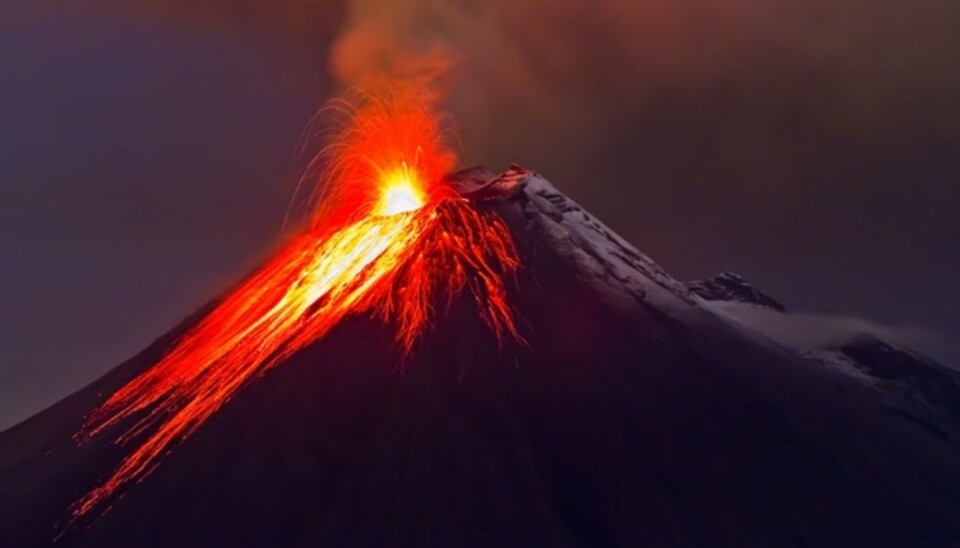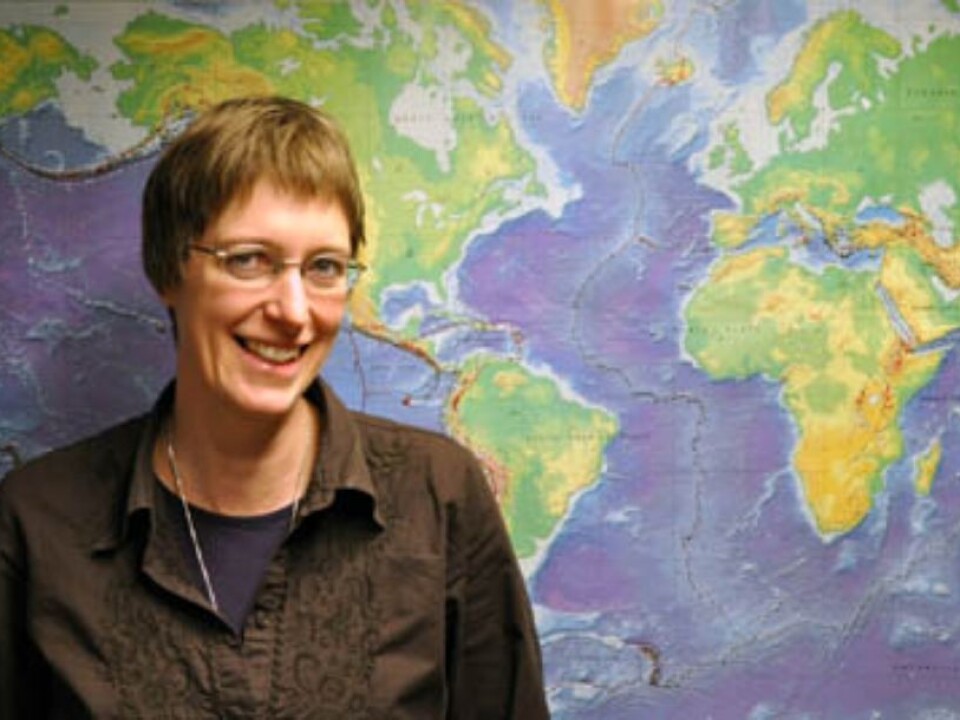An article from NGU - Geological Survey of Norway

Volcano opened the ocean
A volcanic eruption deep in the mantle forewarned the start of the formation of the Atlantic Ocean between Norway and Greenland.
Denne artikkelen er over ti år gammel og kan inneholde utdatert informasjon.
“We think this igneous activity made the Earth’s crust warm and pliant. The flood of magma, melted rocks, reaching the surface was the decisive impetus that made the continents split apart, opening the Northern Atlantic Ocean” Susanne Buiter, a researcher at the Geological Survey of Norway (NGU) tells us.
Slow movement
The continents, with Greenland on the one side and Norway and Great Britain on the other side, had already been chewing and grinding away at each other for millions of years before they began to move apart.
“The continents started their journey more than 300 million years ago, but the ocean did not begin to form before 54 million years ago”, Buiter says.
The development is summed up with the help of, among other things, reconstructions of the movements in the crustal plates through geological time.

Susanne Buiter has published the results in Gondwana Research together with her NGU colleague, Trond Helge Torsvik, currently head of the research centre for Earth Evolution and Dynamics at the University of Oslo.
Obvious connection
It was an eruption in what scientists call a large igneous province that caused the formation of what we now know as the North Atlantic.
“We find a clear link between the break-up of many continents, the onset of the formation of oceans and the formation of large volumes of igneous rocks”, says Susanne Buiter.
She points out that precisely this connection is extremely interesting:
“The question is whether this extension, the stretching of the continents, leads to magmatism and igneous rocks or it is the opposite, the magma coming from deep in the Earth leads to extension and formation of oceans?" Buiter says.
"We believe both processes are often instrumental, that forces in the Earth’s crust lead to extension, but the volcanic activity provides the ultimate impulse to rupture the plate and open the ocean.”
Most oceans open at old collision zones, where an ocean has previously been closed and mountains formed. This is because the Earth’s crust is already a little soft here.
"An example is precisely the opening of the Atlantic Ocean following the formation of the Caledonian mountain chain between Greenland and Norway," says Buiter.
However, in some cases, a thick, ancient continent is broken apart instead. For instance, the South Atlantic split apart a continental block in Africa and South America.
"We do not know why this happens, but such observations are extremely exciting”, the scientist enthuses.
Rock slides and earthquakes
For a long time, Susanne Buiter has been doing research on passive geological margins, the transitions between the ocean floor and the continental mainland.
Passive margins are formed when continents break up and move apart. The opening of the Atlantic Ocean between Norway and Greenland is a typical example; our continental shelf now stands on a passive boundary, or margin.
“They are called passive margins, but they can still give us unpleasant surprises in the form of tremors in the ground, volcanic eruptions in some places, rock slides and small earthquakes. Such active processes obviously affect people living in the vicinity of these areas”, Susanne Buiter points out.
At the same time, passive margins can also give economic benefits; much of the world’s oil and gas resources are on the continental shelves.
------------
Read the Norwegian version of this article at forskning.no
Translated by: Richard Binns






























